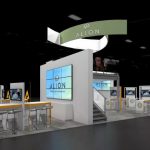- A pharmaceutical facility must adhere to strict regulations and standards set by regulatory bodies.
- Environmental controls such as air filtration and temperature control must be included in the design of a pharmaceutical facility.
- The layout of a pharmaceutical facility should consider personnel and process flow, equipment, and maintenance.
- Instrumentation must be calibrated regularly to ensure accurate results and reliable data.
- The facility must be designed to mitigate the risk of accidental or intentional contamination through controlled access.
The facility must adhere to strict regulations and standards, and any deviations can lead to significant financial repercussions. Pharma consulting services play a crucial role in guiding the design and operations of pharmaceutical facilities, ensuring strict compliance with regulations and standards to mitigate financial risks and enhance overall efficiency.
A pharmaceutical facility must also be designed to facilitate the production of high-quality and safe medications that can enhance and save patients’ lives. This blog will explore key considerations when creating a pharmaceutical facility.
Compliance with Regulations and Standards
The creation of pharmaceutical drugs involves a complex and multi-stage process that requires strict regulations and standards to ensure safety, efficacy, and consistency in production. A pharmaceutical facility must, therefore, operate under specific guidelines set by regulatory bodies to create a safe and sterile environment for drug development, manufacturing, and packaging. Additionally, leading pharmaceutical facilities leverage X-ray crystallography services to unravel the intricate details of drug compounds, accelerating the precision and efficiency of their drug development processes.
Regulatory bodies that oversee the design of a pharmaceutical facility
The Food and Drug Administration (FDA) and the European Medicines Agency (EMA) are the primary regulatory bodies that govern the design of a pharmaceutical facility. FDA regulations under 21 CFR Part 211 detail the current good manufacturing practice (CGMP) for finished pharmaceuticals, while the EMA’s Good Manufacturing Practice (GMP) guidelines define the appropriate construction, layout, and maintenance to ensure compliance with European Union standards.
Environmental controls in the facility
The design of a pharmaceutical facility must include environmental controls such as air filtration and temperature control. The facility must be designed to prevent contamination of the drug product and to minimize the risk of cross-contamination between different products. The facility must also have a clean and controlled environment to reduce the risk of microorganisms or other contaminants affecting the quality of the product.
Personnel and process flow
The design must consider the flow of personnel in and out of the facility and the flow of processes and materials. The layout must be efficient to ensure that materials can be moved easily, and personnel can navigate the facility without compromising the sterile environment. The design must also consider the number of personnel and their roles to ensure that the facility is adequately staffed to maintain a high-quality standard.
Equipment and maintenance
The facility must have the necessary machinery and equipment to manufacture the drug product. Equipment must meet strict specifications to ensure that it does not provide a source of contamination. It must be regularly maintained, calibrated, and validated to give the required confidence level in product quality.
Flooring Materials and Solutions

High standards of cleanliness and hygiene are essential for the pharmaceutical production space. Therefore, the flooring material must be chosen carefully. Seamless floors should be considered to minimize dirt or product accumulation in cracks and crevices.
Floors made from materials such as epoxy resin, terrazzo, and vinyl will also help ensure that the space remains hygienic, safe, and compliant with GMP standards. In general, you must ensure that the pharmaceutical flooring solutions you choose are fit for purpose and will provide your facility with the highest hygiene, safety, and compliance.
Facility Design and Layout
The design and layout of a pharmaceutical facility must be optimized to support operational efficiency and the specific production processes employed. The facility should be designed to minimize contamination and cross-contamination and ensure proper airflow.
Layout decisions should be made with quality and safety advisors to ensure the facility and equipment are adequately situated for compliance standards.
Equipment and Instrumentation
The equipment used in a pharmaceutical facility must be high-quality, reliable, and robust. This prerequisite ensures that the equipment is up to producing medications that meet regulatory requirements and adhere to GMP guidelines. Additionally, instrumentation must be calibrated regularly to ensure accurate results and reliable data.
Workflow and Process Management

Workflow and process management are essential considerations when designing a pharmaceutical facility. Pharmaceuticals come through a series of processes that must be optimized and integrated. The facility must be prepared for fluid procedures for efficient turnaround time while minimizing waste.
Security and Safety
Last, security and safety are critical considerations when designing a pharmaceutical facility. The facility must be prepared to mitigate the risk of accidental or intentional contamination by incorporating features such as controlled access, clean room facilities, and security and surveillance systems. The location of the facility should also be considered concerning the physical security of the site and access to critical personnel as needed.
Final Thoughts
The design of a pharmaceutical facility must adhere to a strict set of regulations and standards, prioritize safety and security, and consider selecting the appropriate equipment and instrumentation while optimizing efficiency in workflows and process management. The steps outlined above can benefit companies and their stakeholders planning to design a pharmaceutical facility.



